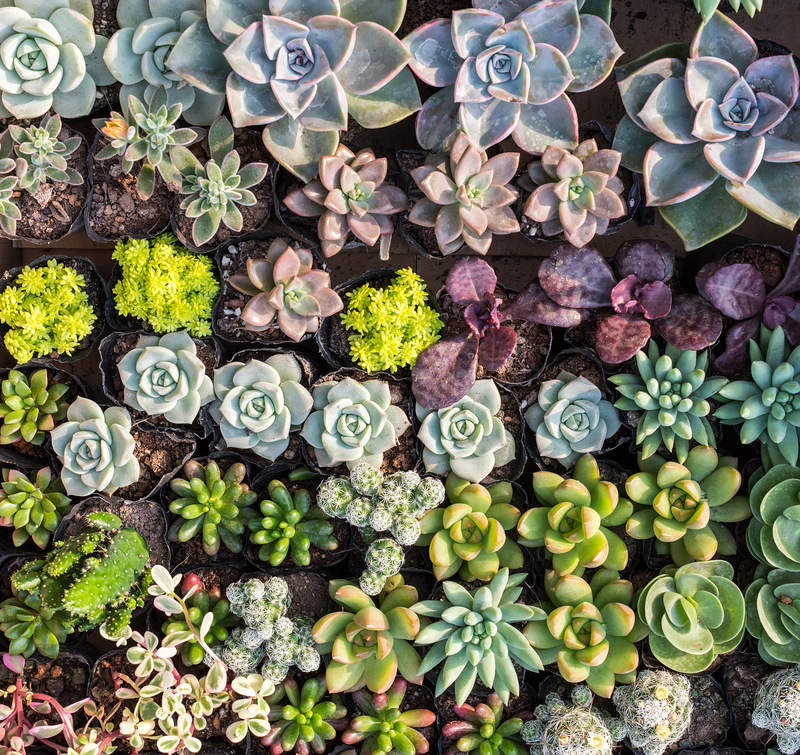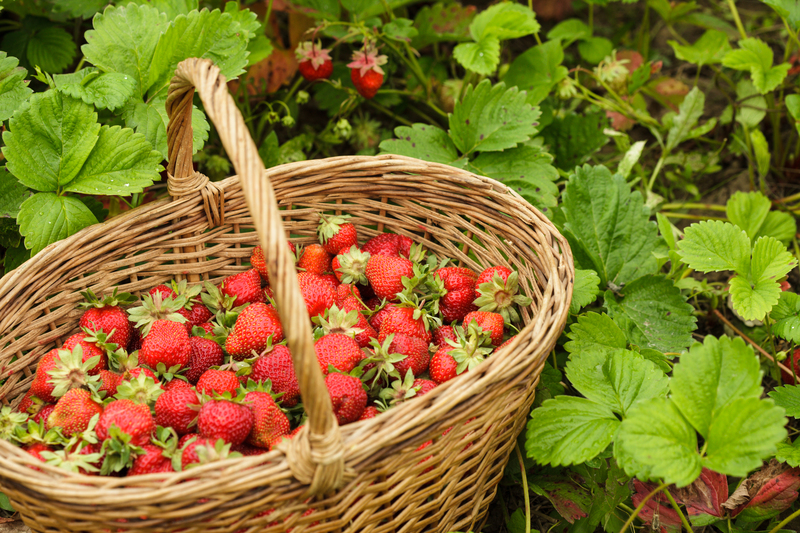A Journey Through the World of Container Gardening
Posted on 18/08/2025
A Journey Through the World of Container Gardening
Welcome to a comprehensive exploration of container gardening, an innovative and accessible way to bring nature closer to your home, balcony, or office. Whether you're an urban dweller with limited outdoor space or a gardening enthusiast eager to experiment, this guide will provide in-depth knowledge, practical tips, and creative ideas to make your container gardening journey both successful and enjoyable.
What Is Container Gardening?
Container gardening refers to the practice of growing plants in containers instead of putting them directly in the ground. These containers can be pots, tubs, barrels, hanging baskets, or any other vessel that can hold soil and support plant life. This style of portable gardening is ideal for individuals who want flexibility and control over their growing conditions.
- Adaptable to almost any environment
- Ideal for small spaces such as balconies and patios
- Allows mobility and creativity in garden design
Why Choose Container Gardening?
There are many compelling reasons why container gardening has become increasingly popular:
- Space efficiency: Perfect for urban living with limited yard space.
- Accessibility: Raised containers are easier on the back and knees.
- Soil control: You determine the soil mix, ensuring plants get what they need.
- Pest and disease management: Less exposure to soil-borne diseases and garden pests.
- Versatility: Grow herbs, vegetables, flowers, and even small trees!

Getting Started With Your Container Garden
Embarking on your container gardening journey may seem daunting at first, but with just a few foundational steps, you'll be ready to grow a lush haven regardless of your available space.
Choosing the Best Containers
The success of your potted garden largely depends on selecting appropriate containers. Here are key factors to consider:
- Size: The container must accommodate root growth. Larger plants require deeper and wider pots.
- Material: Options include clay/terra cotta, plastic, wood, metal, or ceramic--each with unique pros and cons (e.g., terra cotta is porous but heavy, plastic is lightweight but may heat soil quickly).
- Drainage: Ensure every vessel has adequate drainage holes to prevent root rot--a critical aspect of healthy container gardening.
Selecting the Right Potting Mix
One of the secrets to successful container plant cultivation is using the right growing medium. Standard garden soil is generally unsuitable because it compacts and drains poorly when confined in a pot.
- Lightweight potting mix: Commercially available blends offer superior drainage and aeration.
- Soil components: Look for a mix containing peat moss (or coconut coir), perlite or vermiculite, and compost for nutrients.
- Customization: Amending potting mix with specialized ingredients like sand for succulents or extra compost for heavy feeders (like tomatoes) can further enhance plant health.
Choosing Plants for Your Container Oasis
The real excitement of container gardening lies in the endless diversity of plants you can grow. Your choices will depend on your aesthetic preferences, available sunlight, and culinary ambitions.
Best Edible Plants for Container Gardens
- Herbs: Basil, parsley, thyme, mint, and chives thrive in containers.
- Vegetables: Cherry tomatoes, lettuce, spinach, peppers, radishes, and bush beans.
- Fruits: Strawberries, dwarf citrus trees, and blueberries (in acidic soil blends).
Ornamental Plants for Container Design
- Annual flowers: Petunias, marigolds, pansies, geraniums, and impatiens add seasonal color.
- Perennials: Hostas, daylilies, and ferns offer low-maintenance, long-lasting appeal.
- Decorative grasses and succulents: These add texture and structure to your container arrangements.
Remember that plant selection is guided by matching the plant's requirements (sunlight, water, and nutrient needs) with the situation of your containers. Group plants with similar needs for best results.
Designing Your Container Garden
A successful container garden not only thrives but also looks beautiful. Here are professional tips for creating attractive, dynamic displays:
Combining Plants: The Thriller, Filler, Spiller Approach
A classic design strategy uses three types of plants:
- Thriller: A tall, focal-point plant placed in the center or back (e.g., upright grass or ornamental pepper).
- Filler: Mid-height, bushy plants that surround and complement the thriller (e.g., begonias, coleus).
- Spiller: Trailing plants that cascade over the pot's edges (e.g., sweet potato vine, trailing lobelia).
This formula provides balance, movement, and visual interest for any container display.
Color, Texture, and Height
- Color harmony: Combine hues that complement or contrast for a vivid effect.
- Texture contrast: Pair fine-leaved grasses with bold-leafed annuals.
- Height variation: Use varying heights to create layers and depth.
Caring for Your Container Garden
Once you've set up your container gardening project, proper maintenance is essential for continued vibrancy and productivity.
Watering Techniques
- Frequency: Container plants often dry out faster than those in the ground. Check soil moisture daily in hot weather.
- Technique: Water thoroughly so moisture reaches the root zone, but avoid soggy conditions.
- Tip: Self-watering containers and mulch can help conserve water and stabilize soil temperature.
Fertilization and Feeding
- Most container plants require regular feeding--nutrients leach out with frequent watering.
- Use slow-release granular fertilizer or a diluted liquid feed every 2-4 weeks during the growing season.
- Always follow package instructions to prevent fertilizer burn.
Managing Pests and Diseases
- Regularly inspect leaves, stems, and soil surface for signs of insects or fungal problems.
- Remove affected foliage or treat with organic solutions such as neem oil or insecticidal soap.
- Rotate crops in edible container gardens annually to minimize pest and disease buildup.
Creative Container Gardening Ideas
Modern container gardening is about pushing boundaries. Here are inventive approaches to inspire your own green masterpiece:
- Upcycled planters: Repurpose old boots, teapots, barrels, or drawers for unique, eco-friendly plant homes.
- Vertical gardens: Use wall-mounted pockets or stacked containers for a lush, space-saving feature.
- Theme gardens: Create a culinary herb patio, pollinator haven, or succulent desert in your containers.
- Mobile gardens: Put large containers on wheels to chase the sun or shelter from storms.
Troubleshooting Common Container Gardening Problems
Every gardener meets challenges. Here's how to address the most frequent issues in the container gardening world:
Wilting or Yellowing Leaves
- Overwatering or underwatering is often the cause--check drainage and soil moisture daily.
- Ensure containers are not sitting in water-filled saucers.
Stunted Growth
- Could indicate root crowding--repot into a larger container if necessary.
- Test for nutrient deficiencies and fertilize appropriately.
Pest Issues
- Isolate infested containers to prevent spread.
- Introduce beneficial insects or use safe, organic pest controls.
Container Gardening Through the Seasons
One advantage of container-based gardening is adaptability to all seasons:
- Spring: Start with cool-season crops and early-flowering annuals.
- Summer: Heat-loving vegetables, herbs, and sun-worshipping flowers thrive.
- Autumn: Plant ornamental kale, chrysanthemums, and late leafy greens.
- Winter: Group evergreen containers for interest, or protect delicate pots from frost by moving them indoors or wrapping with insulating materials.
The Health, Environmental, and Lifestyle Benefits of Container Gardening
Choosing portable gardening offers a multitude of benefits beyond aesthetics:
- Boosts mental well-being: Daily interaction with plants can reduce stress and improve mood.
- Increases access to fresh food: Grow your own organic vegetables and herbs within reach.
- Reduces urban heat: Balcony and rooftop gardens can help lower local temperatures and absorb carbon dioxide.
- Promotes biodiversity: Create habitats for pollinators and beneficial insects even in the city.

Commonly Asked Questions About Container Gardening
Can I use any container for gardening?
Almost anything that can hold potting mix and has adequate drainage can serve as a garden container. Just be sure to drill holes if needed and avoid materials that leach toxins.
How often should I water container plants?
Frequency varies with plant type, weather, and pot size, but most containers require watering at least every couple of days during summer. The top inch of soil should feel dry before you water again.
Do I need to replace potting soil every year?
Refreshing the top third of the potting mix with compost and fertilizer each spring is usually sufficient, but every 2-3 years, a full soil replacement is recommended to avoid compaction and nutrient depletion.
Can I grow trees in containers?
Absolutely! Dwarf or slow-growing trees such as citrus, olive, or Japanese maple can thrive in containers. Ensure you select appropriately sized pots and rich, well-draining soil.
Final Thoughts: Your Path Through the World of Container Gardening
Whether you dream of a fragrant herb collection on your windowsill or a riot of color spilling over your balcony, container gardening offers limitless opportunity for creativity and personal expression. The world of portable planters gives everyone, regardless of space or experience, the ability to cultivate beauty and nourishment.
Start your container gardening adventure today. Experiment, learn from each season, and enjoy reaping the abundant rewards--one pot at a time.

